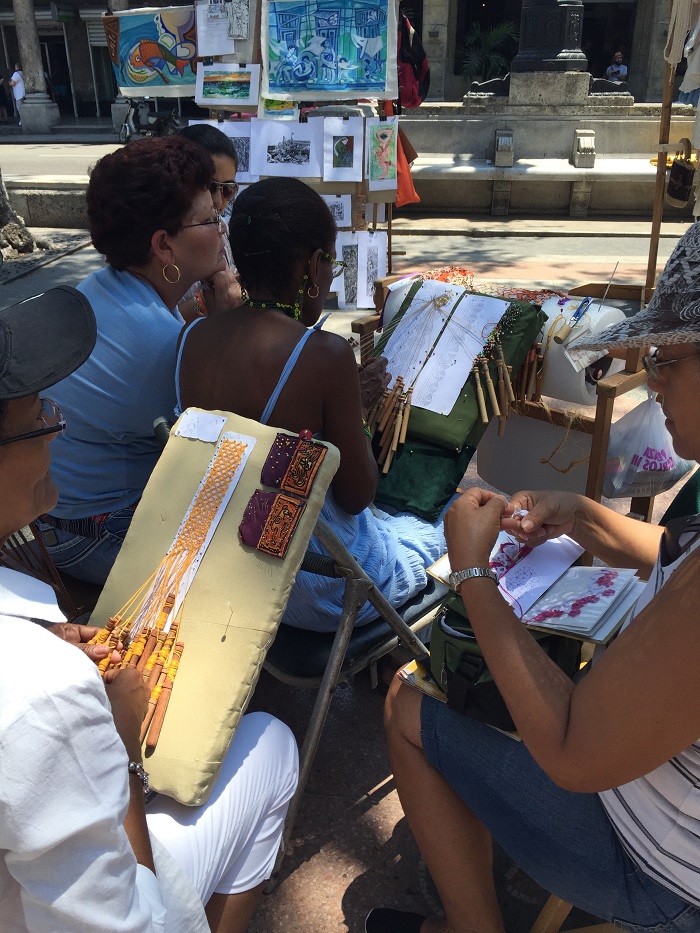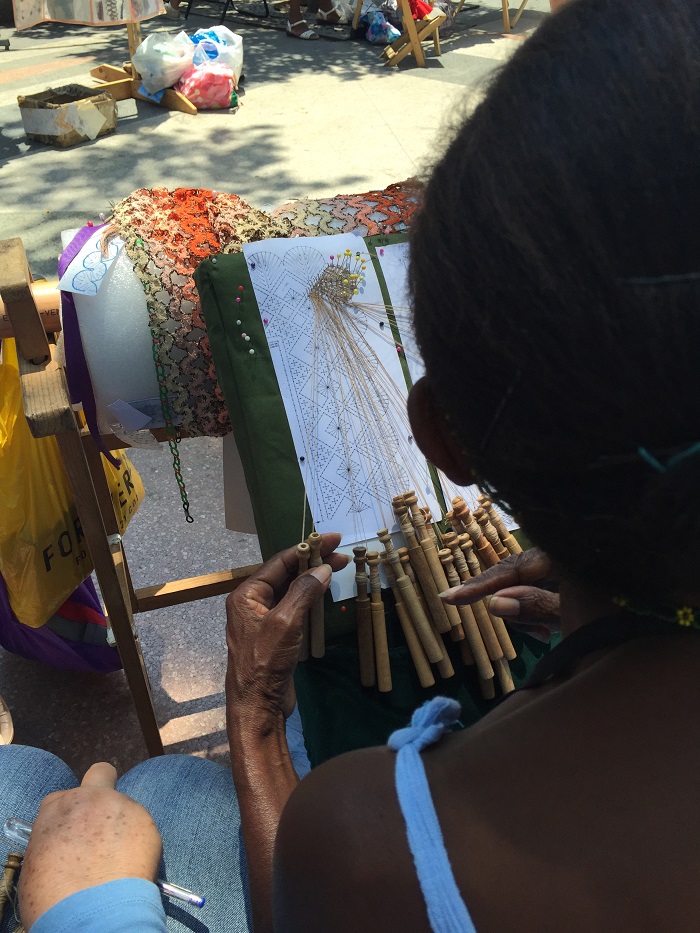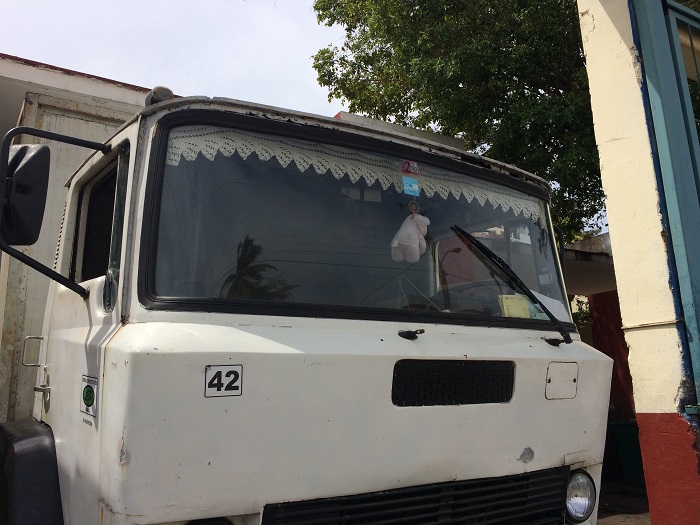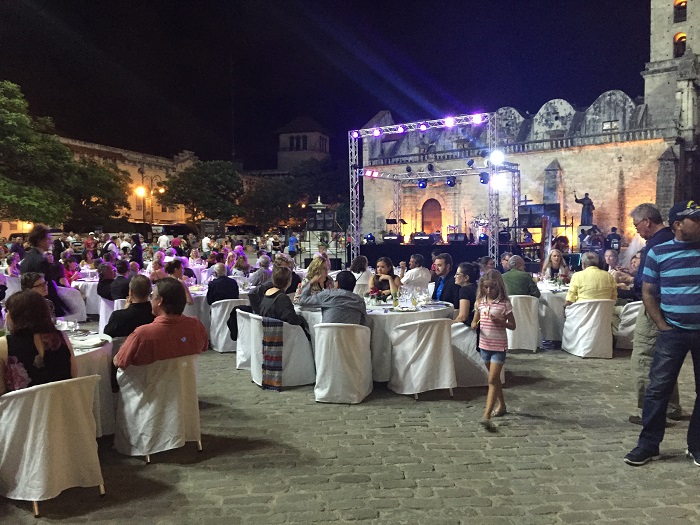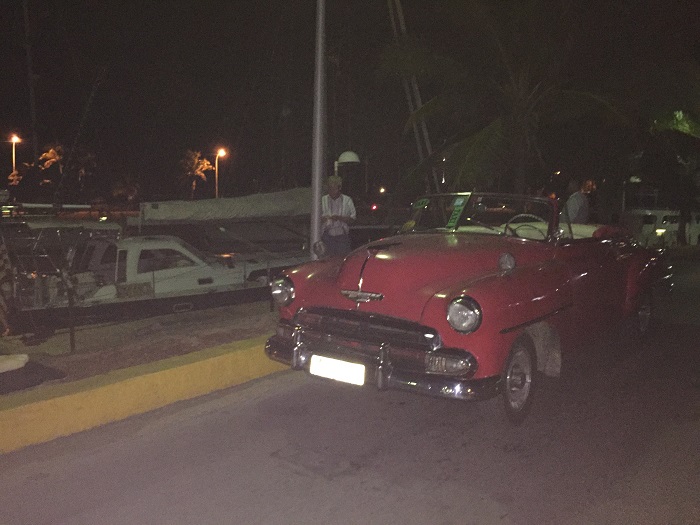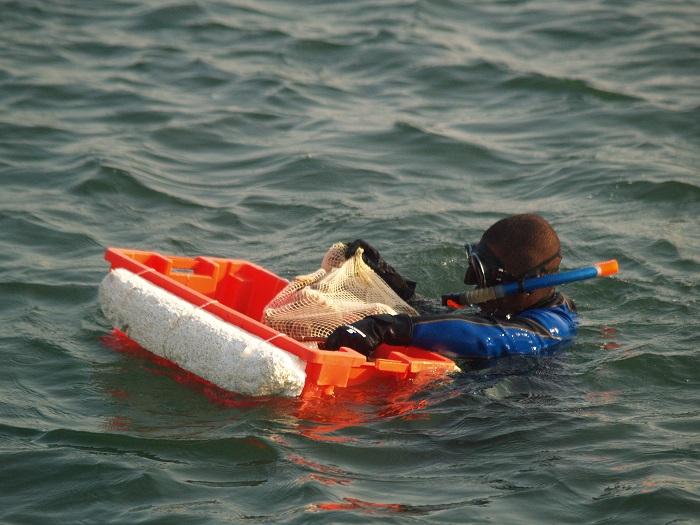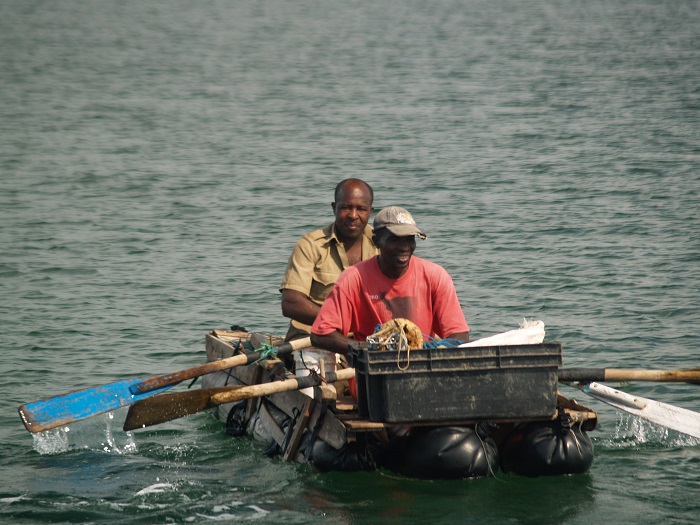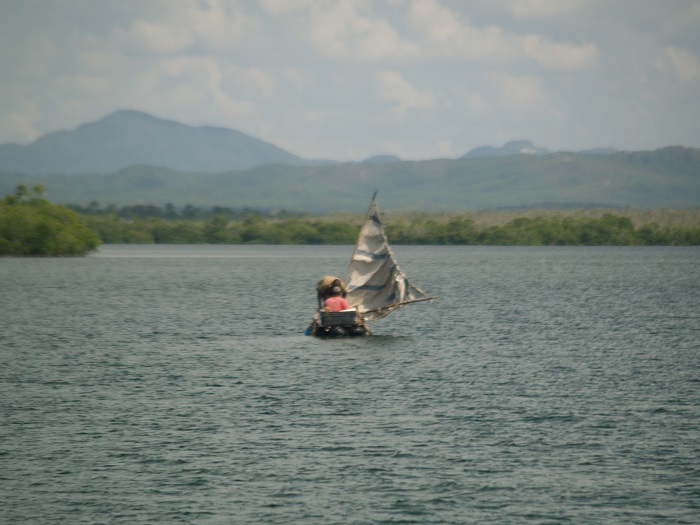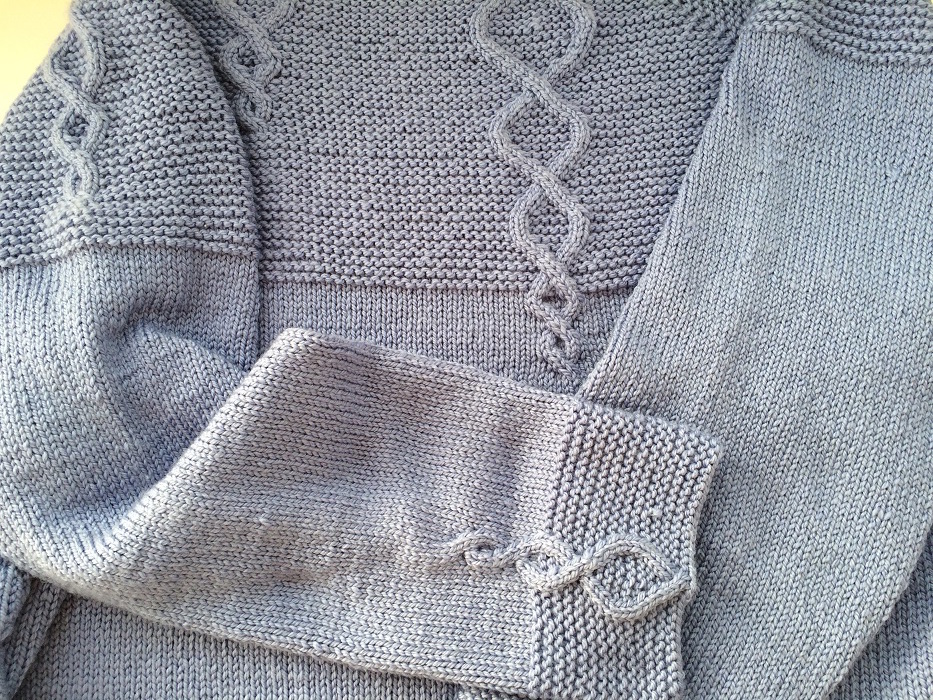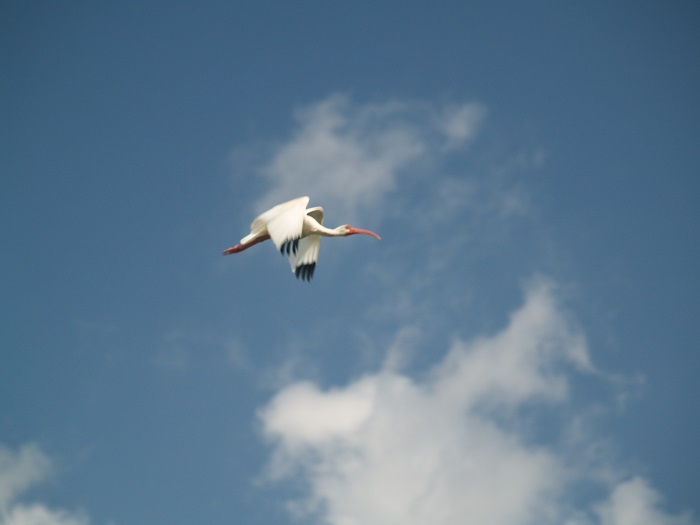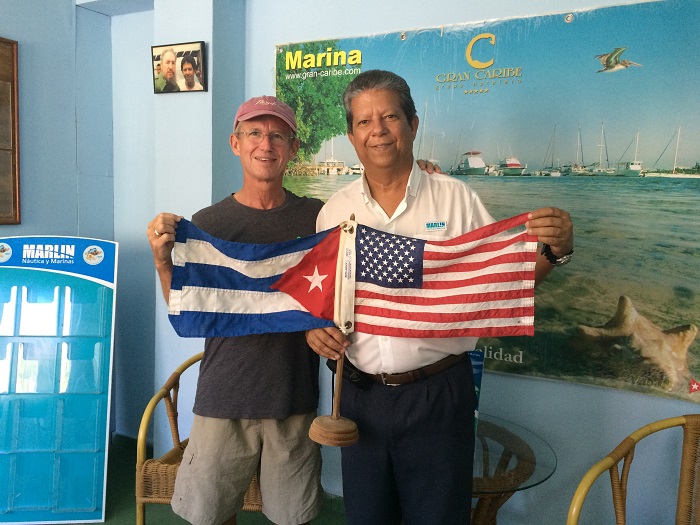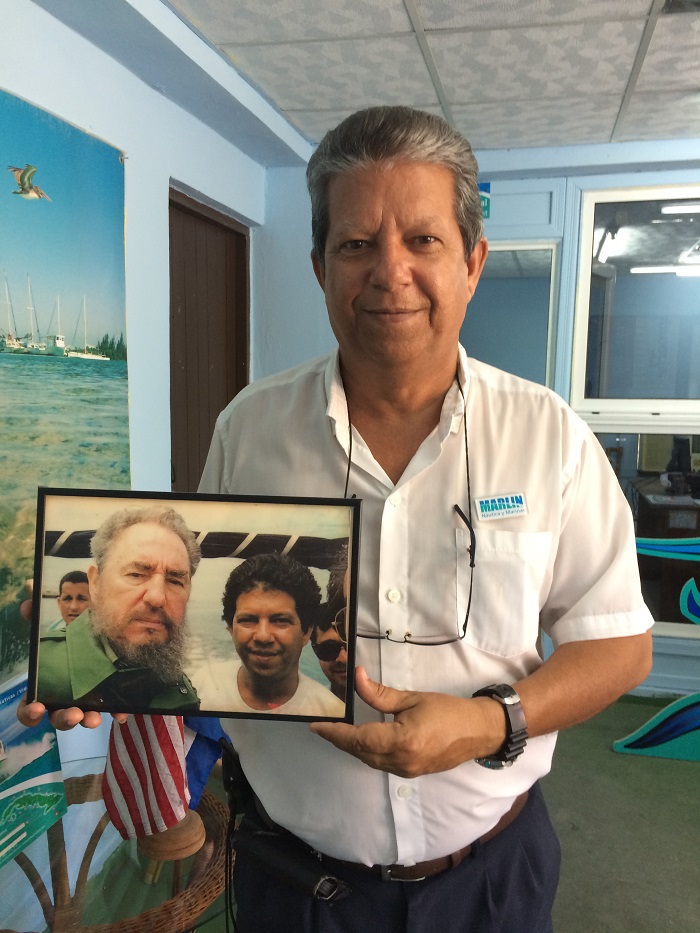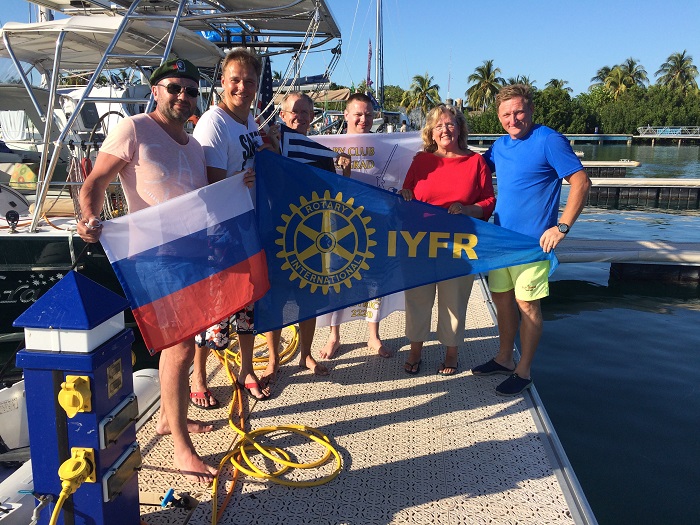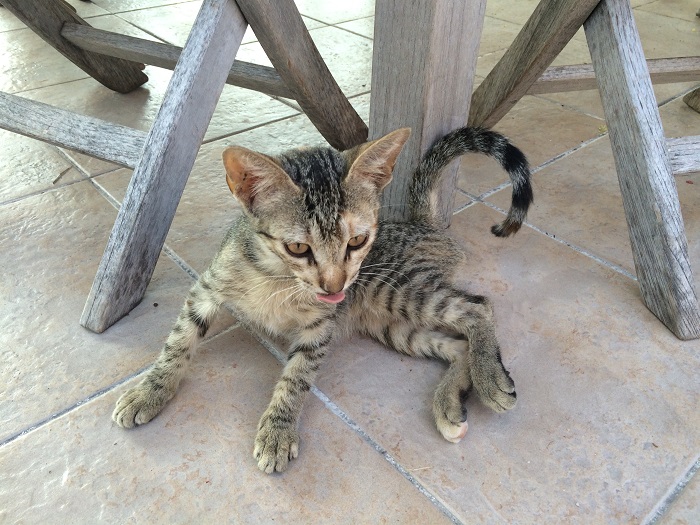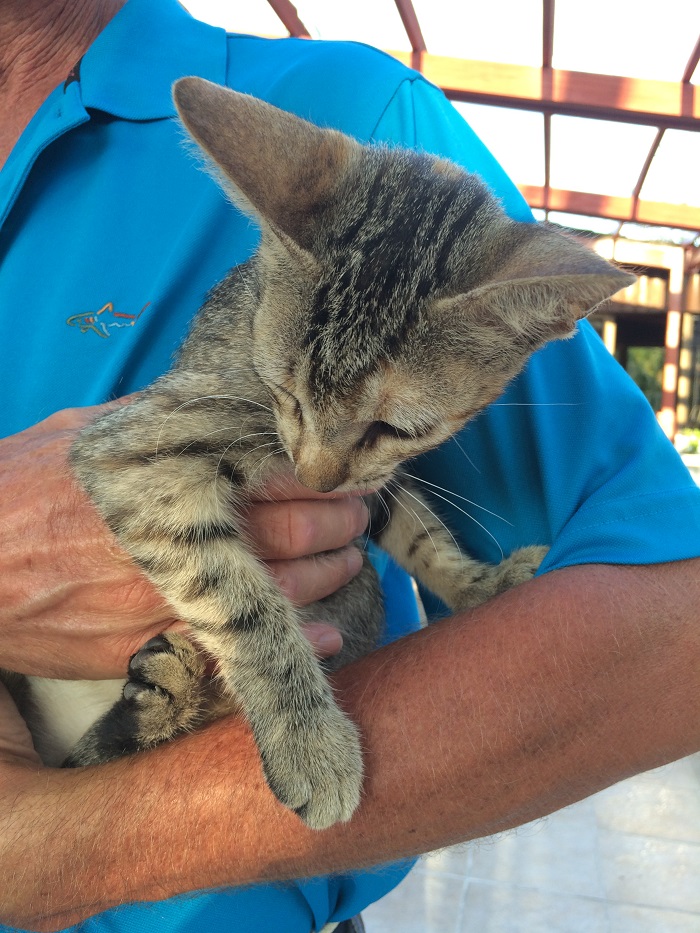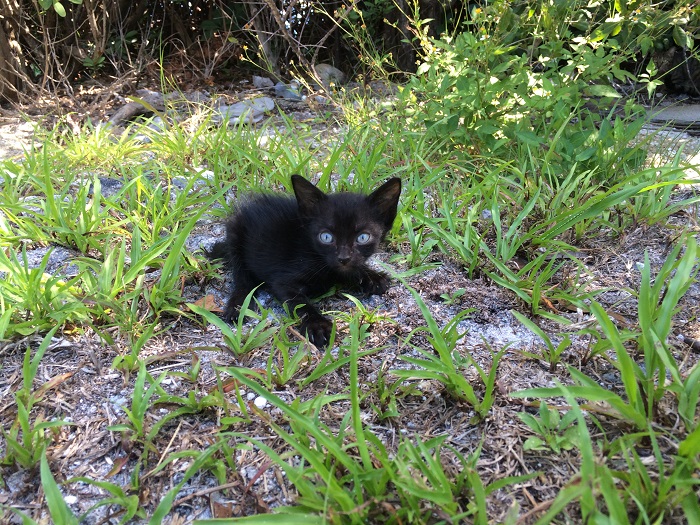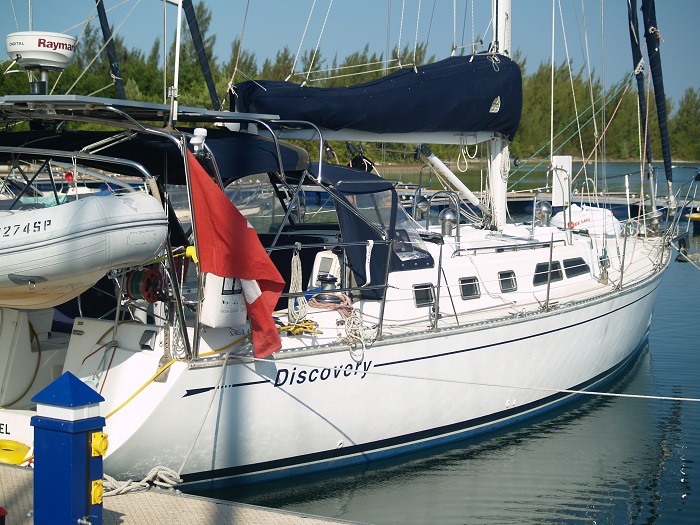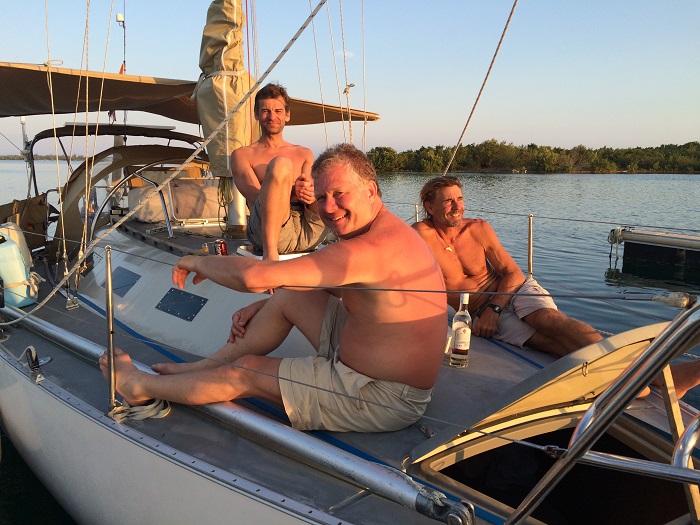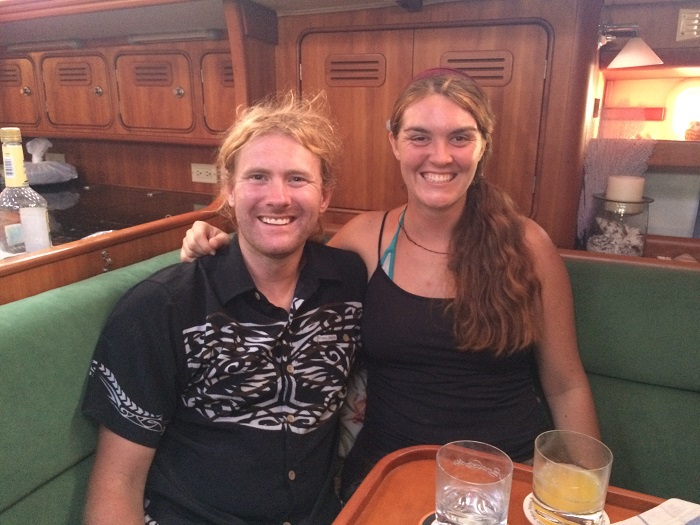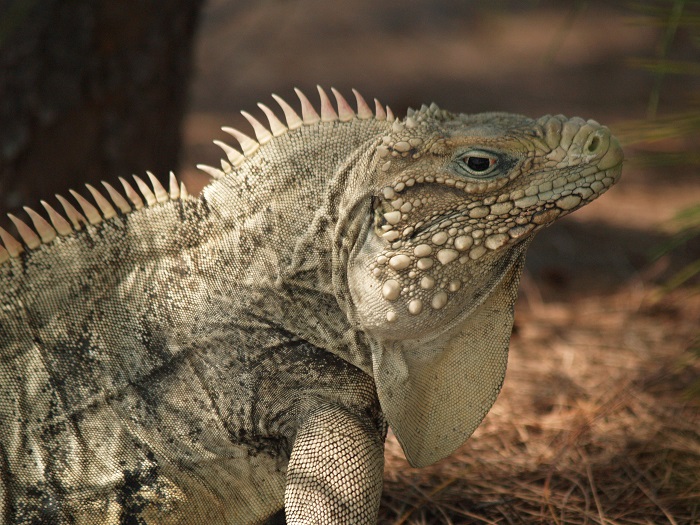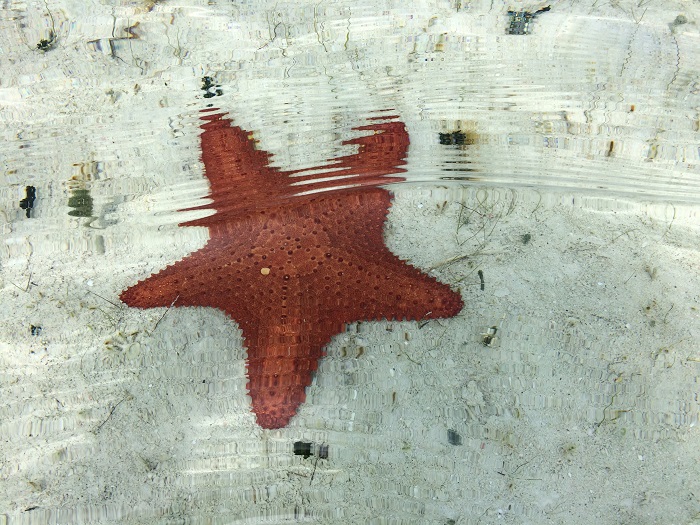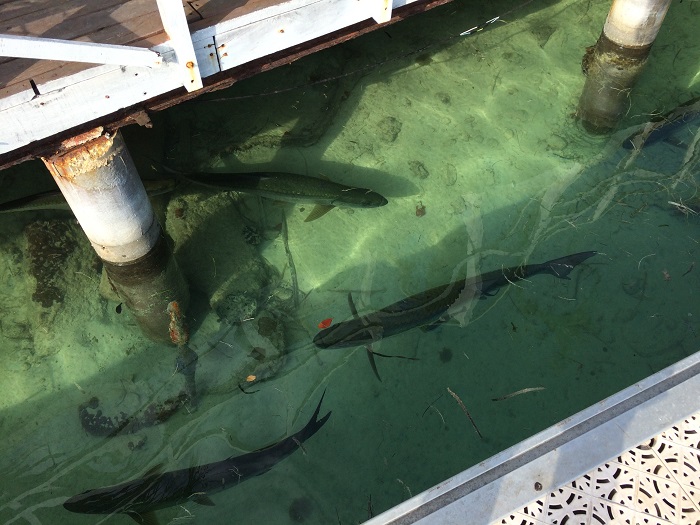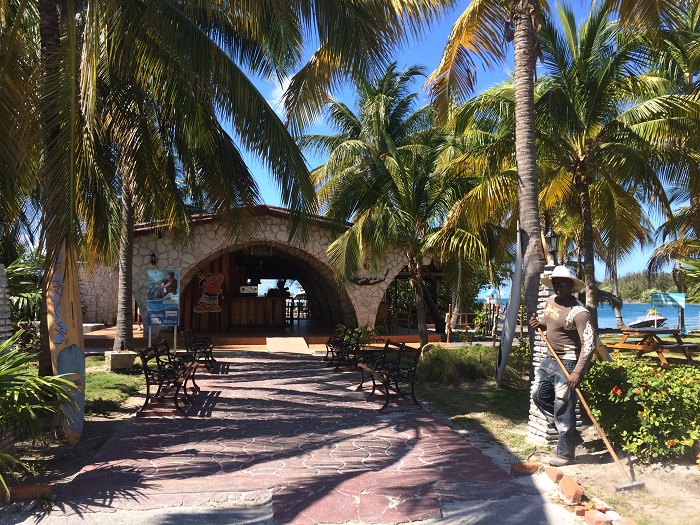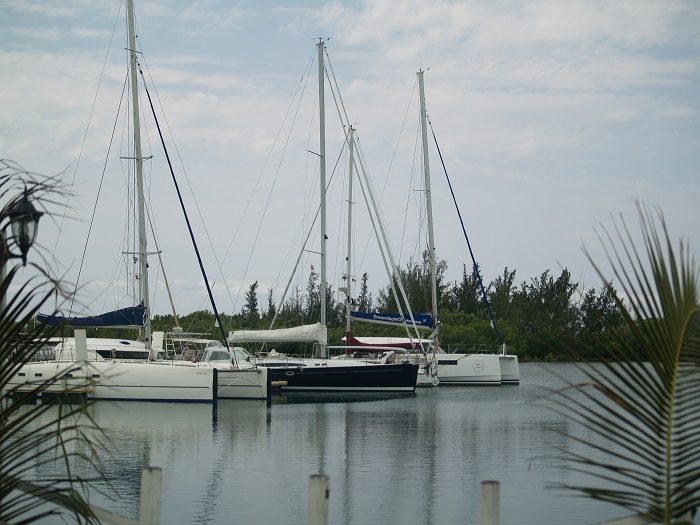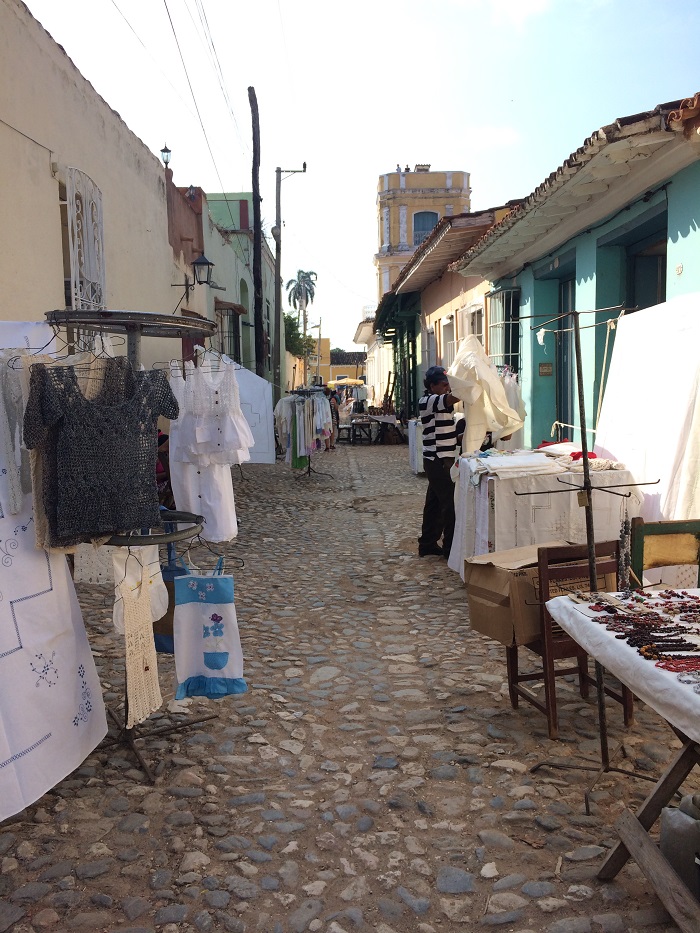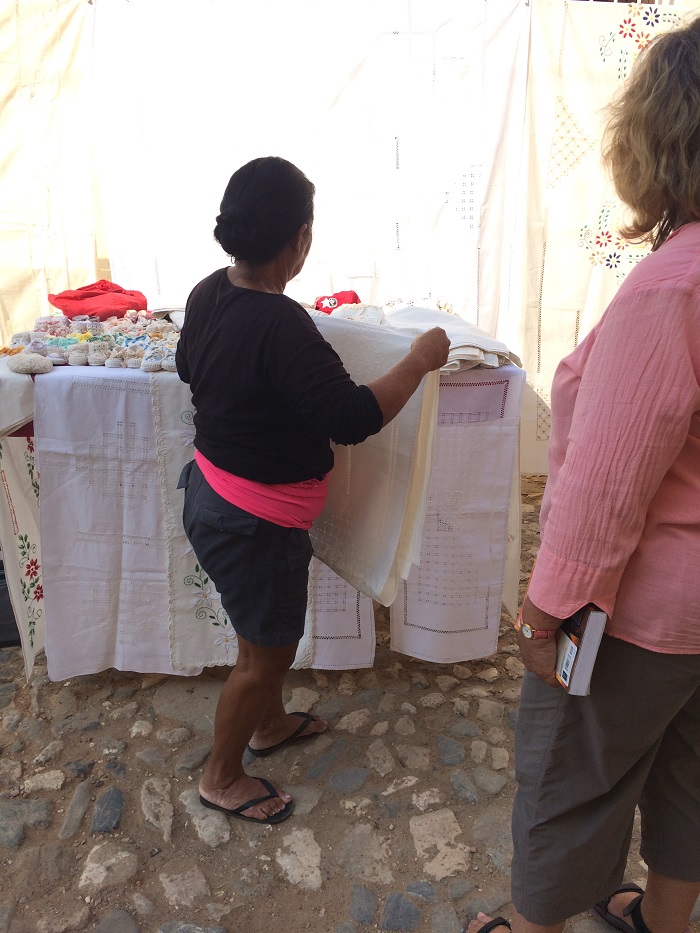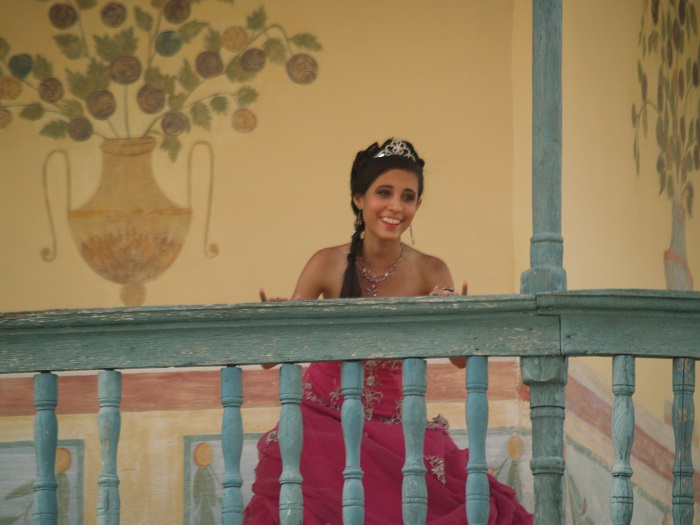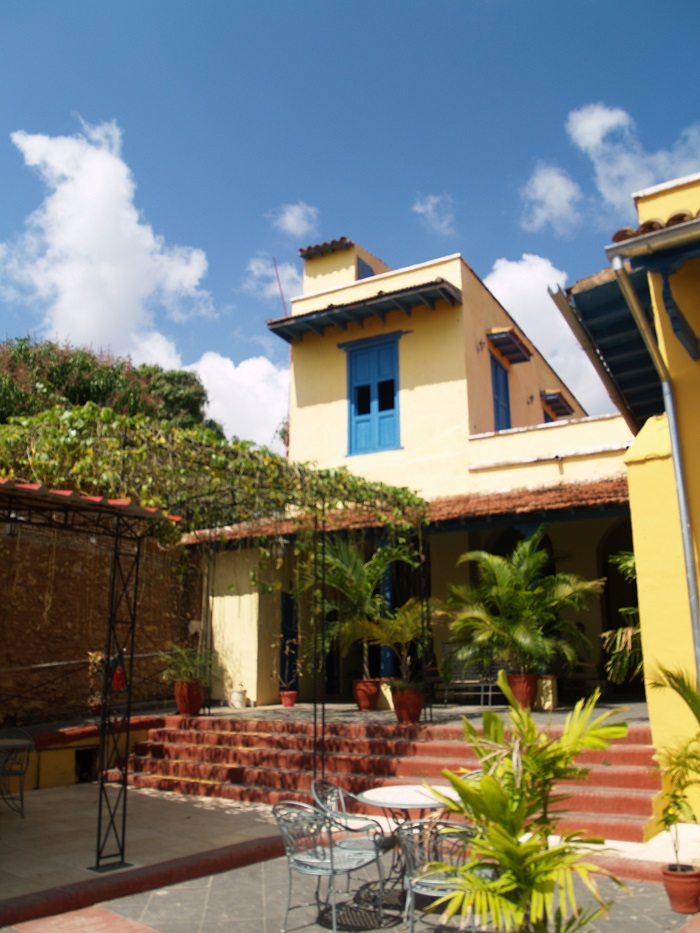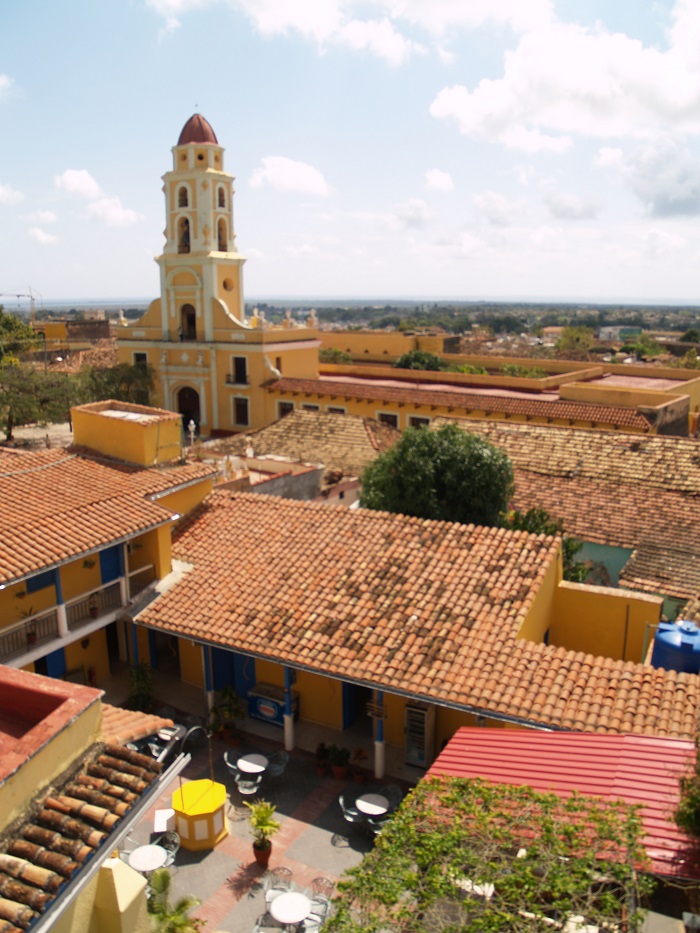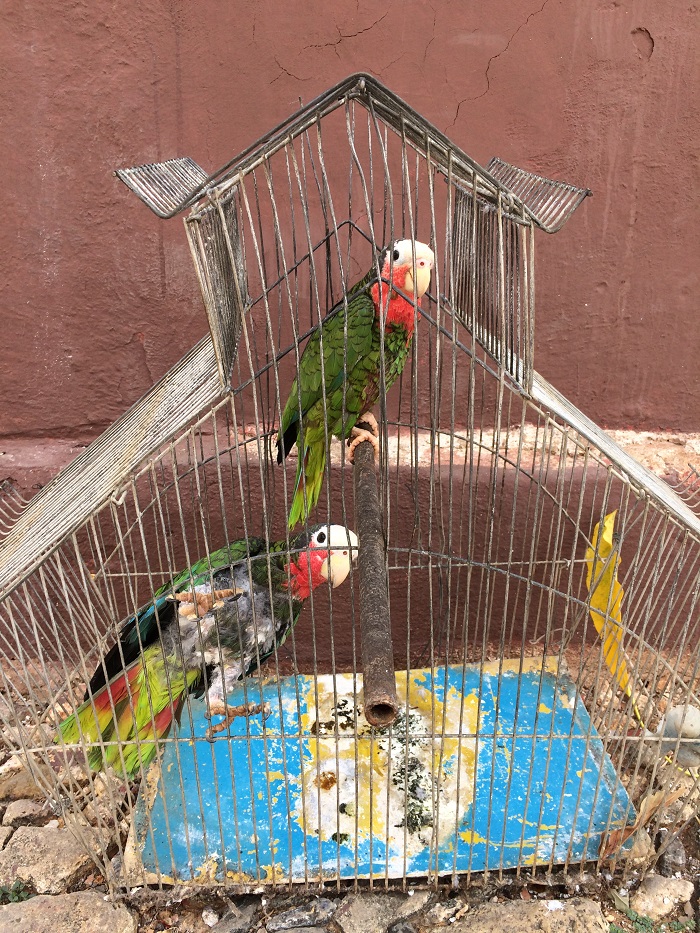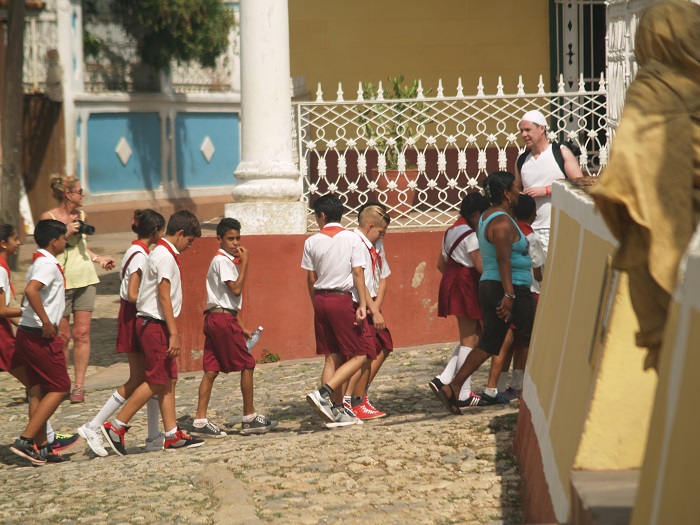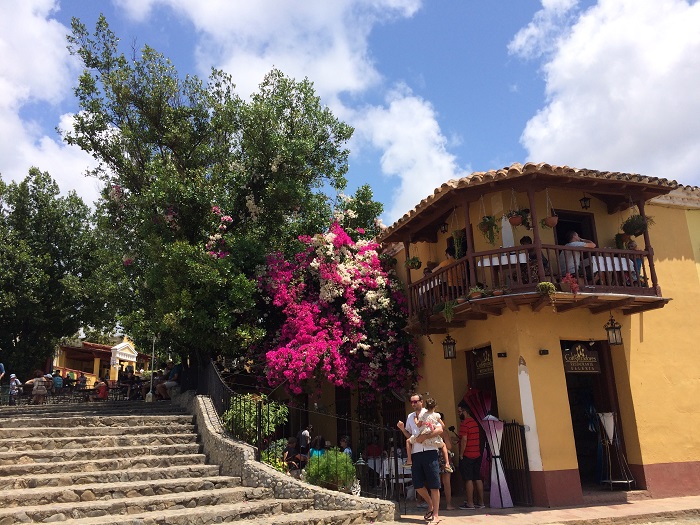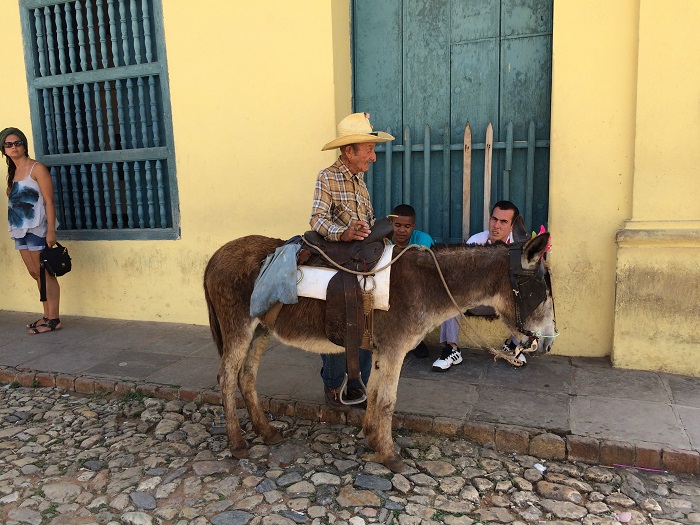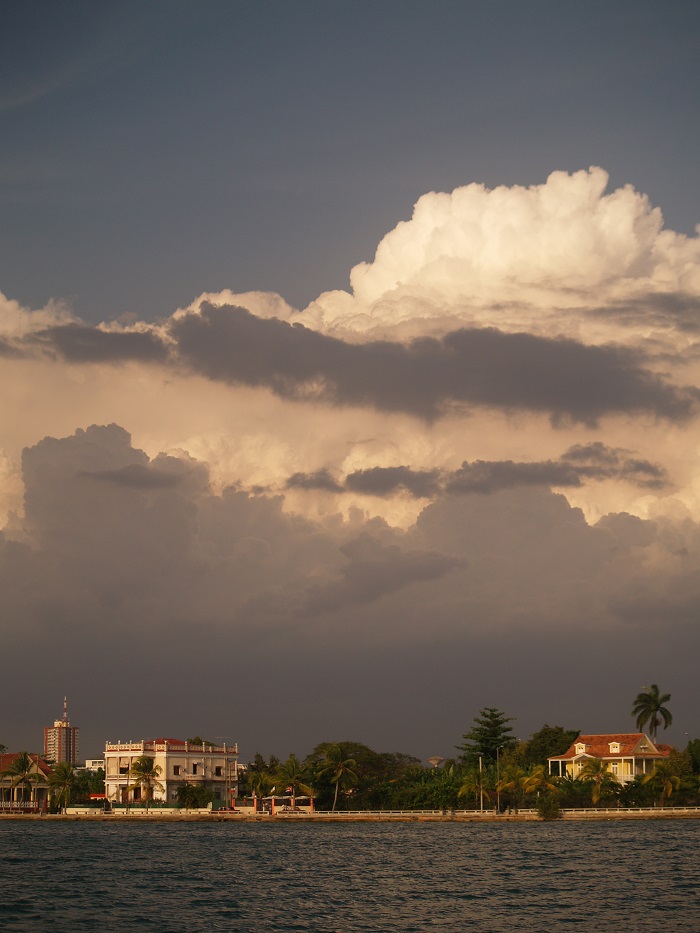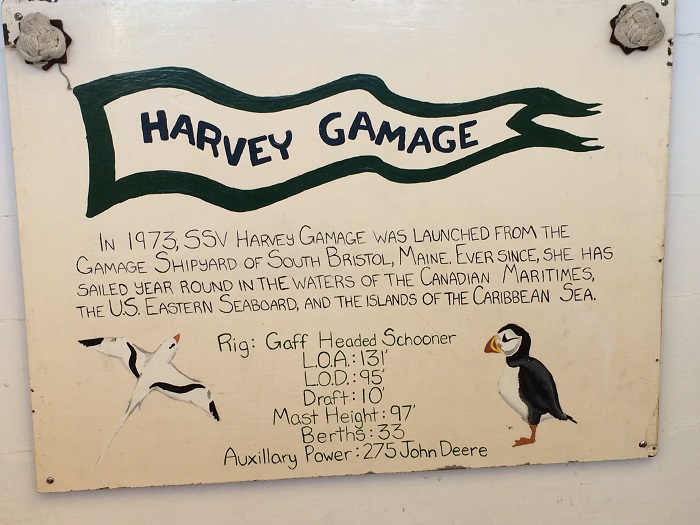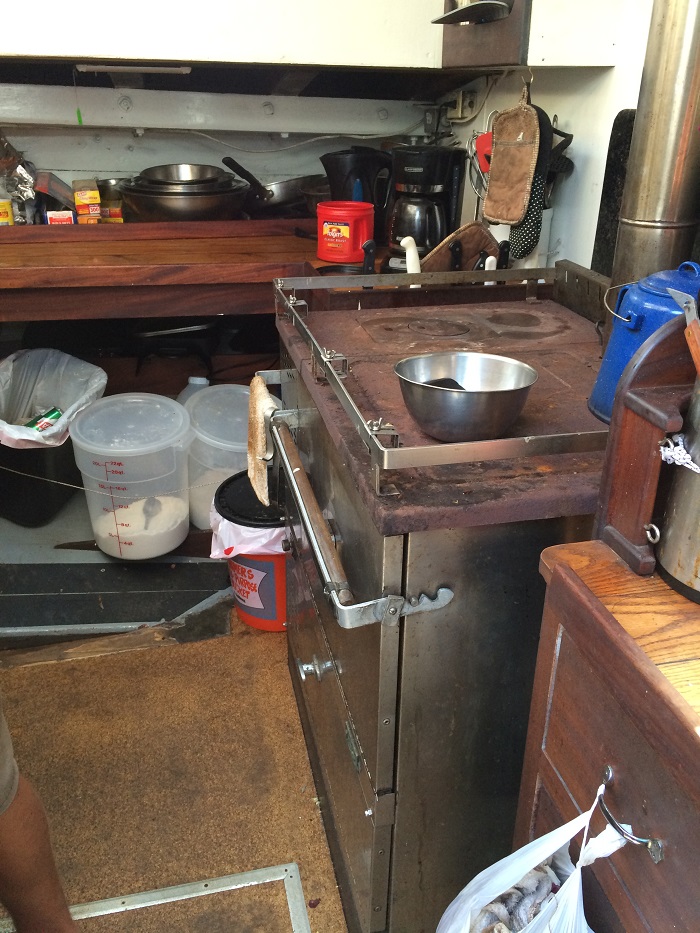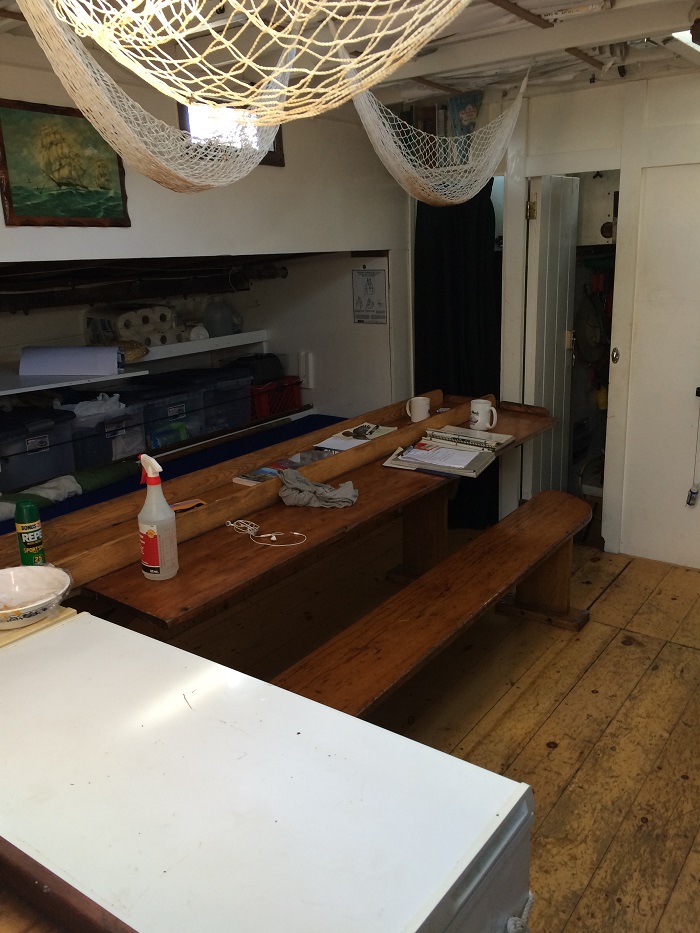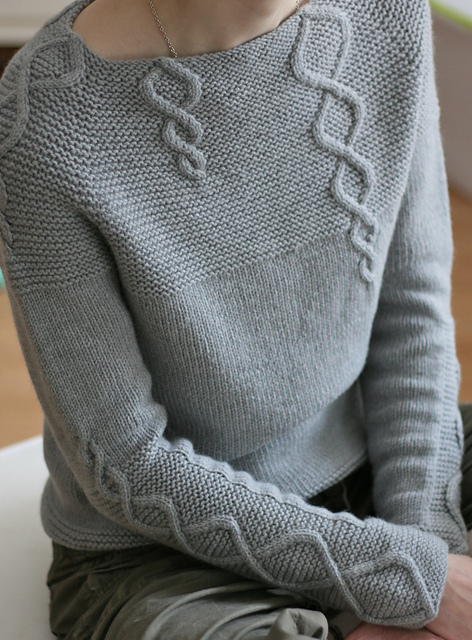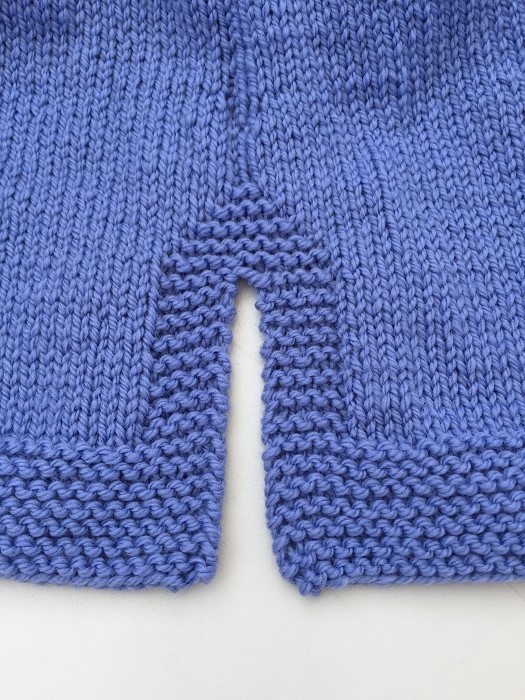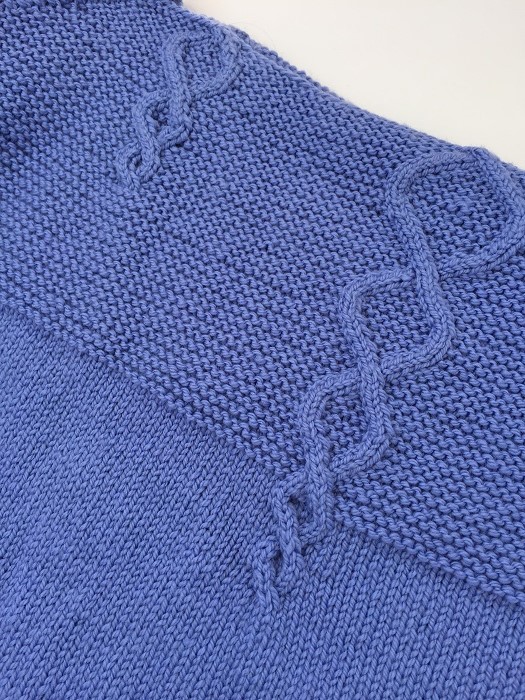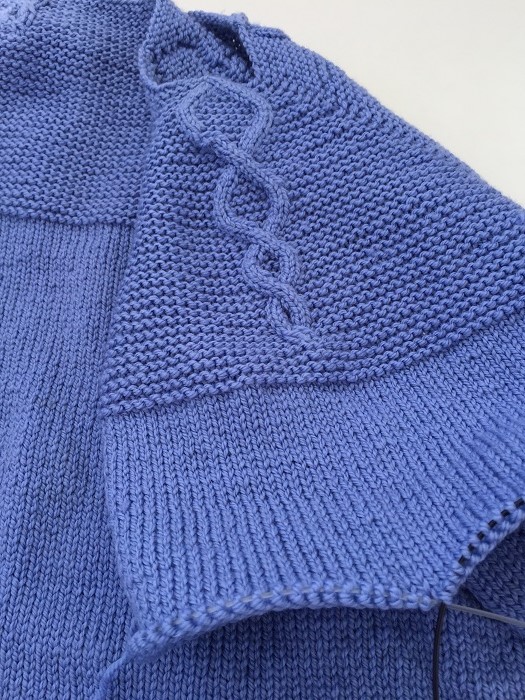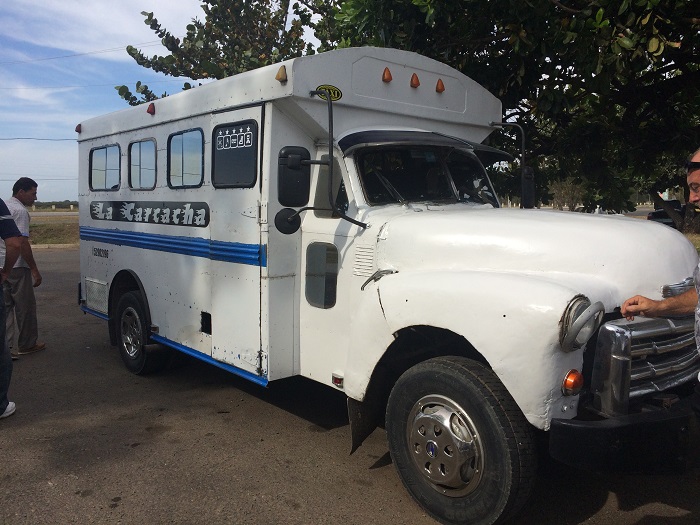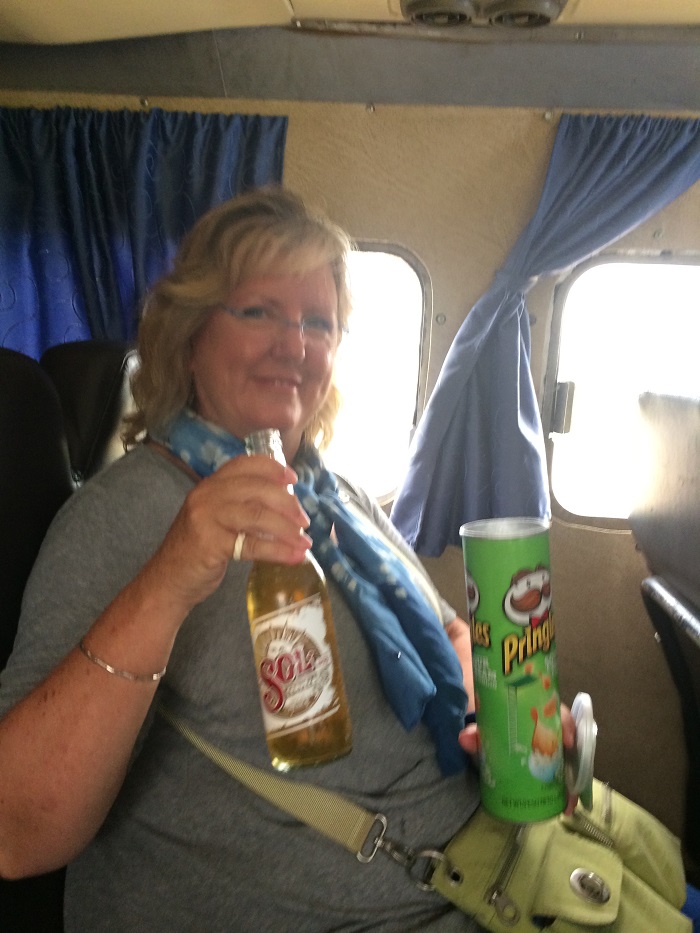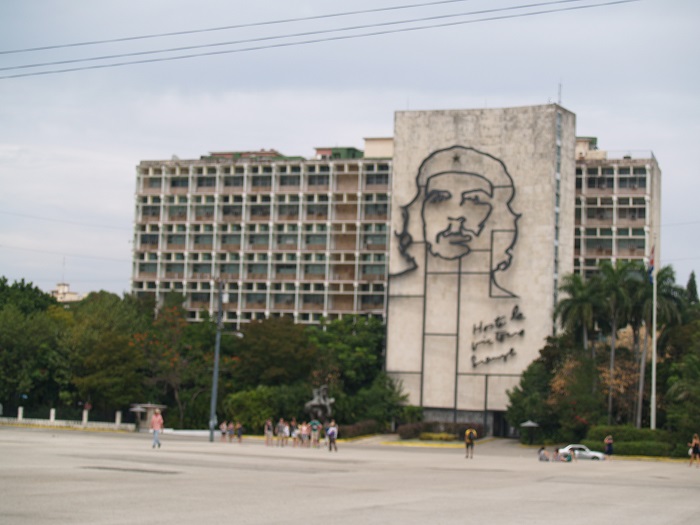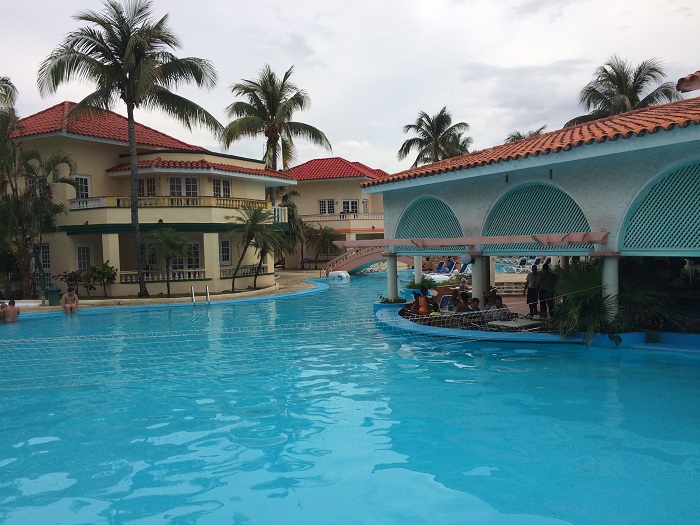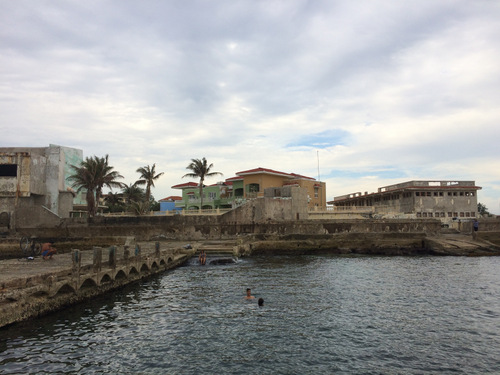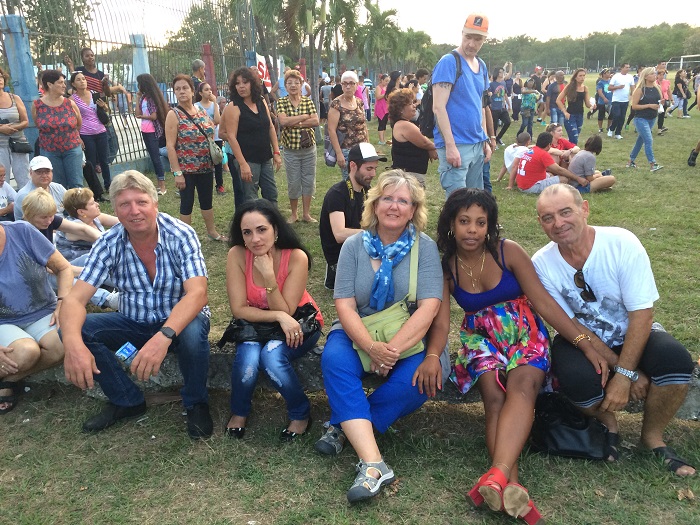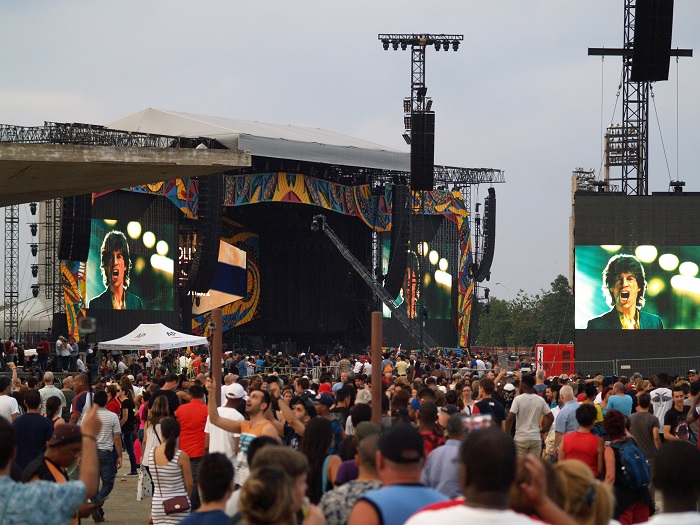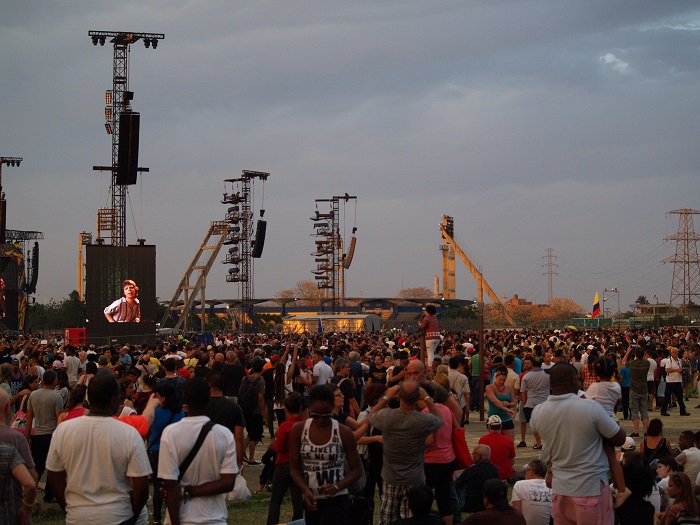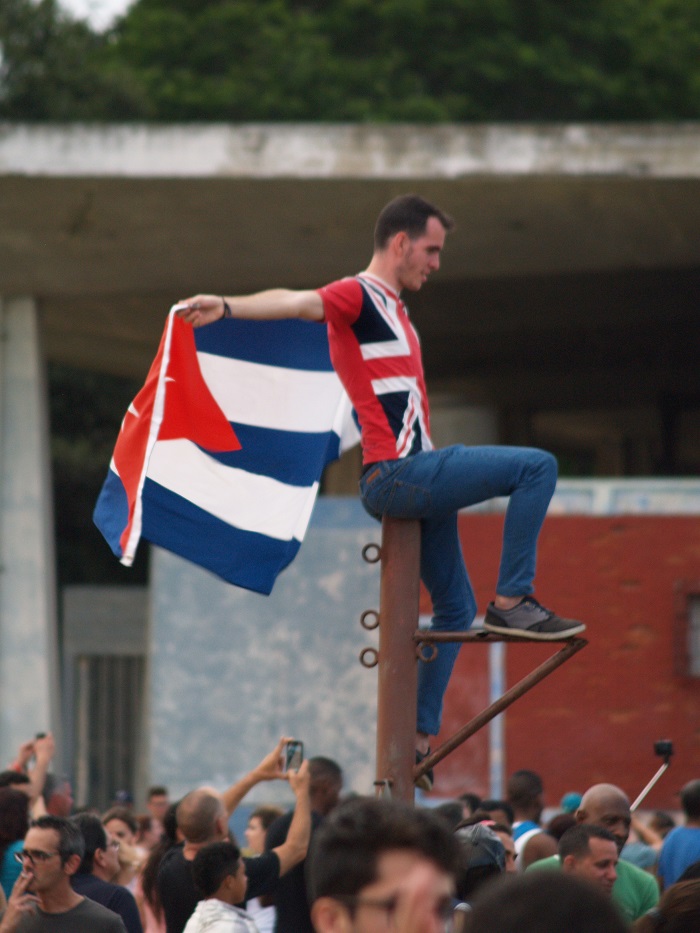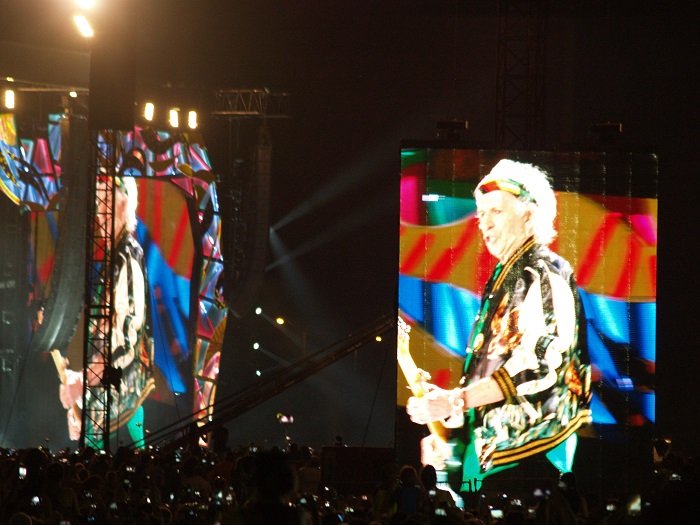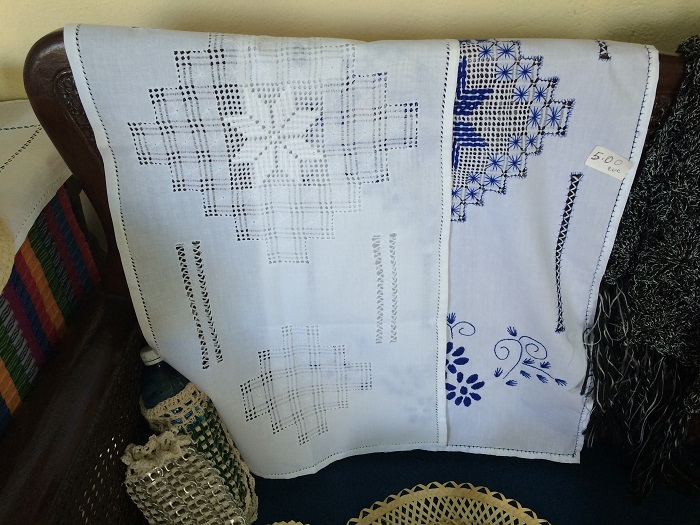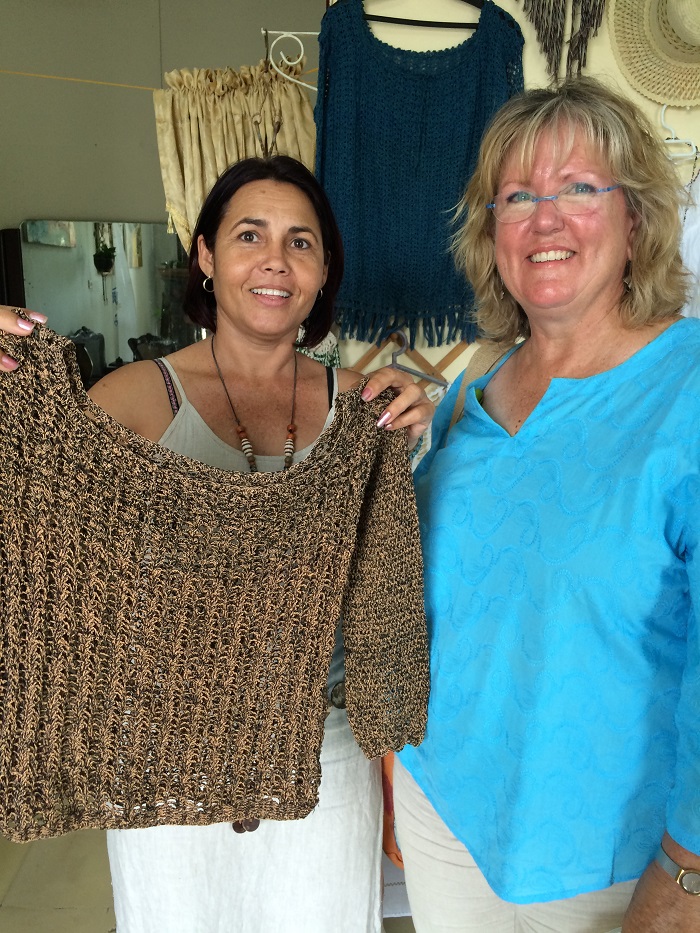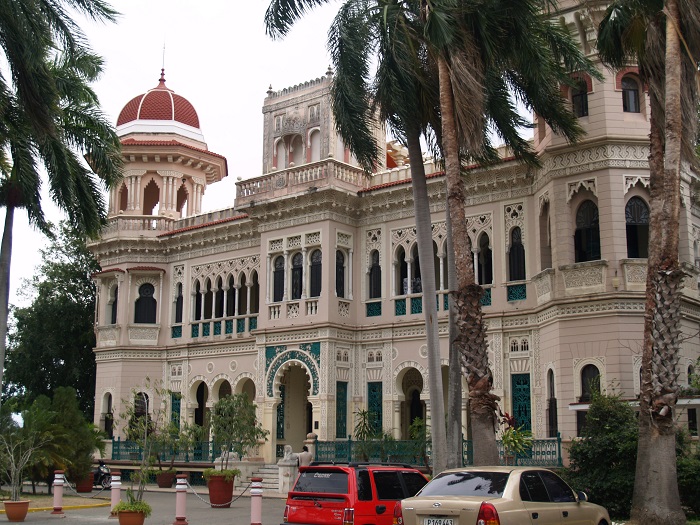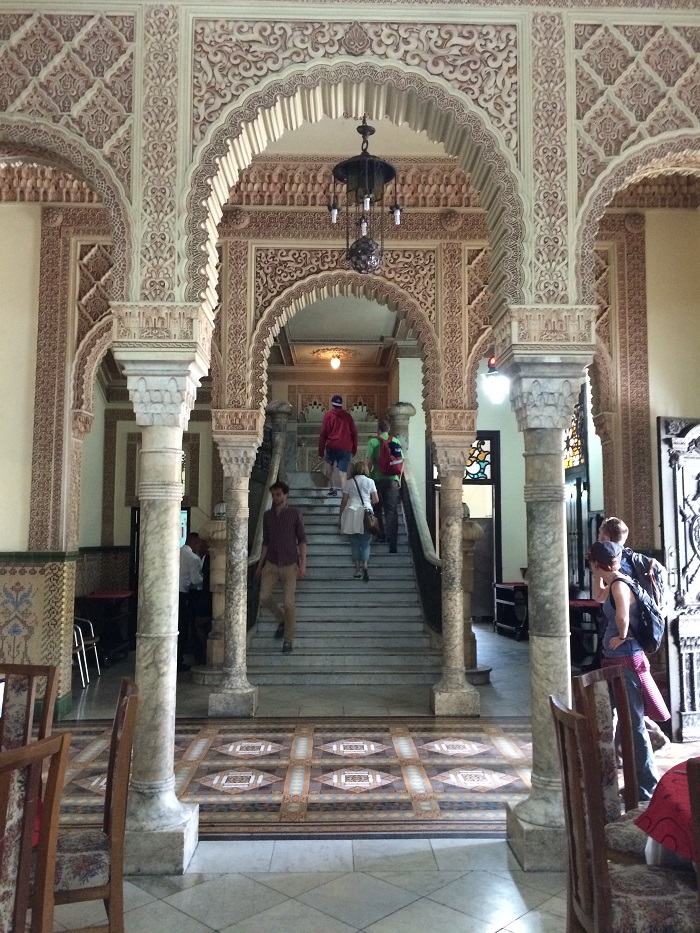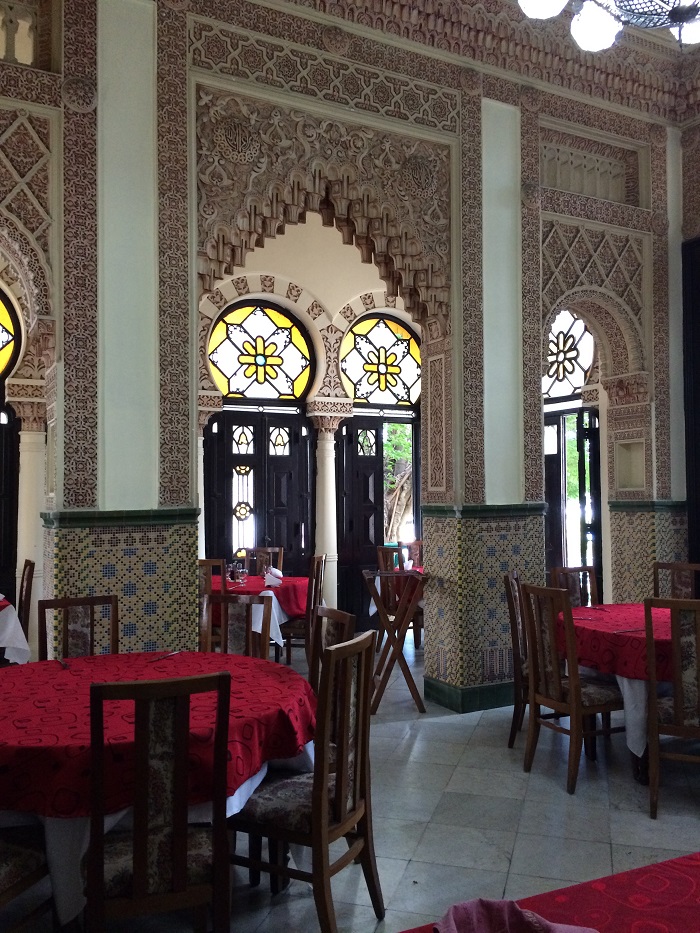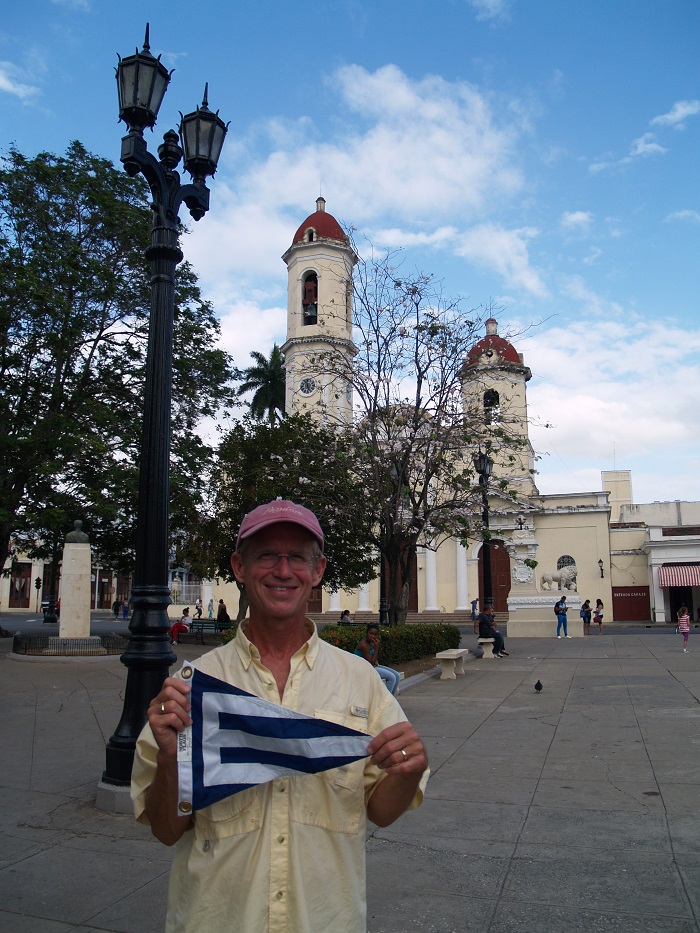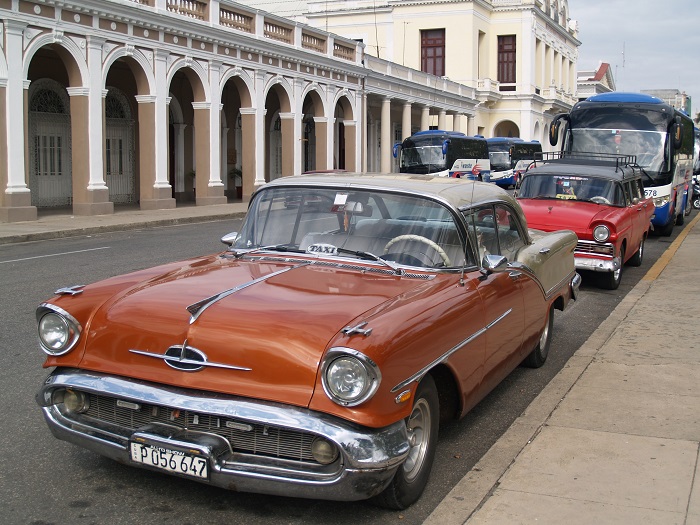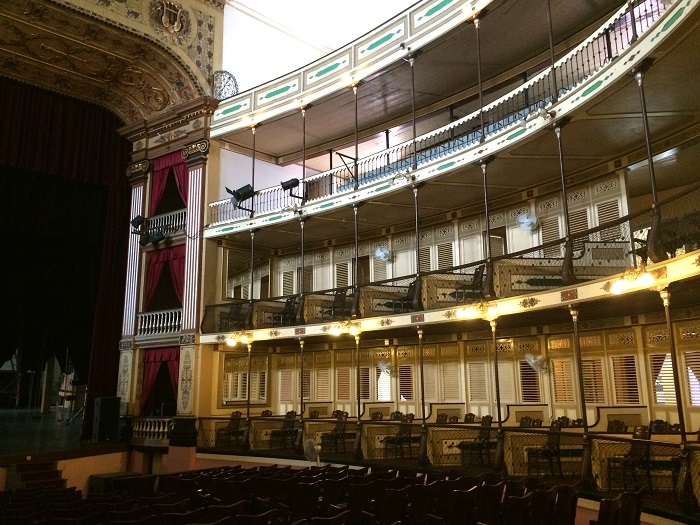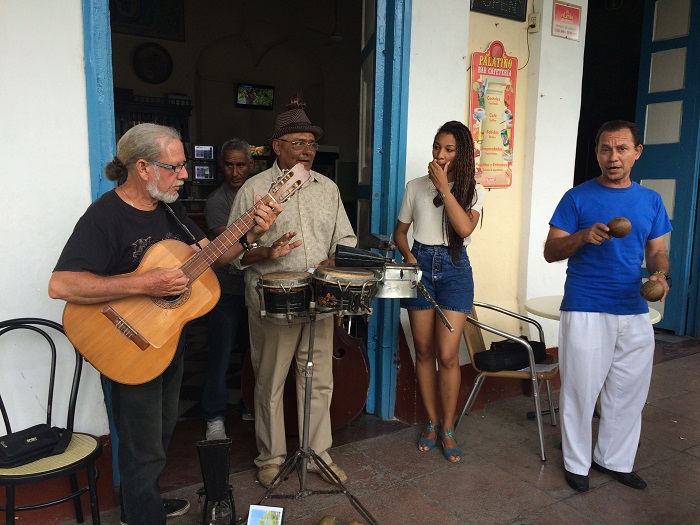What else could I possibly say about a first visit to Havana, where Bob and I found everything we’d hope to find and more that we didn’t expect, other than it was magical?
Saturday morning we took a cab from Marina Hemingway to Havana Viejo. Months ago I posted information about a woman named Adriana Martinez who teaches bobbin lace and tatting and other lace making techniques in an outdoor setting called the Paseo del Prada. This is also the area where you can find well maintained American cars from the 1950s on display.
Our taxi driver dropped us near the Capitolio (currently under renovation that will make this landmark look positively new), and I struggled to find the Paseo del Prada on our map of Old Havana. I was looking at all the little green squares that signify a ‘park,’ but in fact as we wandered, we found it before I ever located it on the map. We saw a lot of art and handwork on display on the park-like median between two large boulevards that starts right at the capitol.
There were brightly colored paintings on display and several ‘workshops’ set up for children to try their hands at painting. But there were just as many women with handwork on display, mostly crochet. I was impressed to see so many women sitting on portable chairs in front of their displays, watching the crowds walk by while their hands were literally a blur, turning out crochet projects at impressive speed. The crochet work is really fine and beautiful. Cotton blouses with lace crochet insets, crocheted shawls and dresses, many dresses for little girls—all of it done in ecru cotton.
And then, before I recognized what I was seeing, there was a group of women clustered around one woman, and about half the women were working on lace pillows while the other have were tatting or crocheting. Moments later when I took my eyes from the bobbin lace work and the tatting, I recognized Adriana Martinez from the link I had found last summer about the arts of Cuba and Joan Sperans’ photo of Adriana.
Can you imagine hearing about an artist who has a display in a park in New York (or any major city in the US) and going there and finding that very artist within moments of arriving? Maybe it could happen, but I can’t tell you how shocked I am to find the very woman, the only woman, I’d heard of doing bobbin lace in all of Cuba. I am stunned!
In this photo Adriana is helping a student with their bobbin lace project (bolillo). Under the student’s pillow is Adriana’s project: a blouse made entirely of bobbin lace!
While I talked to Adriana and a woman named Nancy who knew a bit more English, Bob took my phone and began showing photos of my own work to the other women: tapestry, knitting, bobbin lace. I gave Adriana and Nancy my card, and then all the students wanted cards as well. I was so touched that these women were interested in me, but naturally we were all interested in each other. It is thrilling to find people in a distant location doing the very thing you love to do so much! We were all quite intrigued with each other! At one point Nancy called a man over to interpret for us, and I was shocked at how many textile words he knew. I don’t know if he was related to one of the women doing lace or if he was just someone with his own artwork on display nearby. He was a young man named Hidalgo, rather macho looking, wearing a muscle shirt and smoking a cigar, and he knew all the English words for the techniques and materials the women were using.
And speaking of men, I have to mention that every time an official has come onboard Pandora, either from the Guarda Frontera of the Health Department, or even the fishermen who have rowed these officials out to inspect us, all these men have known that the pile of yarn and needles laying about our cockpit is called ‘tejer.’ Every time, no kidding, one of the men will point to my knitting and say ‘tejer.’ Presuming I might not know what they’re saying they will often put up both their hands and make a pantomime of knitting. There’s no mistaking their pantomime for crocheting or any other handwork. And I can’t help but think of all the American men who always assume I’m quilting, whether I’m sitting in front of a loom or a spinning wheel, or holding knitting needles or have a lace pillow in front of me. When I tell them the name of what I’m actually doing, the standard response is “Quilting…knitting…whatever.” How refreshing that Cuban men know the difference!
Here is a photo I meant to use weeks ago, on my first trip into Cienfuegos. Again, one of the Guarda Frontera had seen my knitting and correctly identified what I was doing. I already knew that many women in Cuba crocheted. I had made a joke to Bob that I could not imagine what women might knit or crochet in such a hot climate. And then I saw this!
The day only got more and more magical. Bob found lots of wonderful antique cars all along the Paseo del Prada and along the road that edges the coast and the Havana harbor. I found the location of the Quitrin shop that sells traditional clothing. I asked if the school of handwork was nearby, and they told me where to find it, although it is closed on the weekends. I hope to visit on Monday.
Every aspect of the day had a touch of magic to it. Walking through the pedestrian only, cobbled streets, we came to the privately owned restaurant (called a paladar) that was written up in the Lonely Planet Guidebook as the best restaurant in all of Havana. We were wilted from the heat and not feeling appropriately attired for such a nice restaurant. But we both felt that since we’d found it would be a shame to pass up such a chance. Paladars are a recent business venture in Cuba, a chance for Cubans to own their own business. Almost all businesses are owned by the government. There are lots of rules about running a privately owned restaurant, from how many tables you can have to who can be hired for staff. Just a couple of years ago the restaurant staff had to be family members of the owner. This restaurant, Paladar los Mercaderes, had quite a large staff, and clearly were not related.

I was asking our waiter for recommendations and also explaining that we’d like to try some traditional Cuban items when man seated at the adjacent table, having dinner alone, introduced himself as the owner of the restaurant and began making recommendations of what we should try. After we ordered, he also insisted that we try a glass of the French Medoc he was drinking, and it was delicious, of course! Yamil Alvarez Torres and his wife and one of his cousins are partners in this venture.
Yamil owns two fishing boats, one on the north coast and one on the southcoast, which supply all the fish for the restaurant. Yamil used to live in this beautiful space with his wife and daughter, and he says he did all the renovations himself to turn it into a stunning setting for his restaurant. When you arrive you walk up a staircase strewn with red and white rose petals to a beautiful dining room appointed with ornate colonial furniture. Our dinner was octopus boiled and then grilled (very tender!) served with two sauces: one was lightly sauteed onions and the other a house-made pesto. Our main course was braised lamb with green olives, onions and small red and green peppers in a bittersweet dark sauce. The flavors were wonderful together! Tangy olives and pungent peppers in a mysterious dark, bitterweet sauce. Dessert was a layered chocolate confection with a torched sugar topping (like the topping on a crème brulee) that I simply cannot describe! It was all excellent, and momentarily after arriving both of us had lost our wilted, bedraggled feeling and were thoroughly enjoying ourselves!
Perhaps the end of the evening was the most magical part of the day. Earlier we had noticed a large park being set up for a dinner. Tables and chairs draped in white cloths (what do you call those covers for chairs?) with centerpieces of red roses filled this square near the San Francisco ship terminal. There was a stage being set up and some dancers were milling about wearing angel costumes. We enjoyed the scene and then wandered on our way. At the end of the evening we found the event in full swing. It turned out to be an American tour group. While I stood in the square transfixed by a harpist playing Debussy’s First Arabesque, Bob began chatting with a couple who’d stepped away from their dining table.
On the one hand, I could not believe I was standing in a square in Old Havana, listening to a harpist play one of my favorite pieces of music, while Bob was learning about the tour group who was having such an extravagant event on the square. It was a large group of people from the AIA, the American Institute of Architects, a group that Bob’s father was closely involved with during all the years he was publisher of “Progressive Architecture.” When I joined the conversation, the man speaking to Bob was saying that he read “Progressive Architecture” for many years.
Bob has moments almost every day when he thinks of his father and wishes he could make a quick phone call to his dad, even though it’s now been over two years since his dad passed away. We were both pretty stunned to find that this extravagant event that we’d watched being set up earlier in the day and that was now in full swing, brought Bob’s father back to us so intensely. It ended our evening in Old Havana perfectly.
Finding a cab back to Marina Hemingway late at night was not quite as easy as we’d imagined. All the taxis wanted more than twice the fare we’d paid earlier in the day. In the long run we found a taxi willing to take us back for only a little more than we’d paid in the morning.
Our driver calls himself Shrek and has a well-preserved red Chevrolet convertible with an almost spotless white interior. It was a terrific ride along the coast back to the marina.
He’d never been to Marina Hemingway before so we had him deliver us right to the side of Pandora tied up along a bulkhead. I tried to get photos of the car and Pandora together—not too easy late at night! And Shrek took photos on his phone while Bob and I did the same.
It was a fun ending to a magical day!

